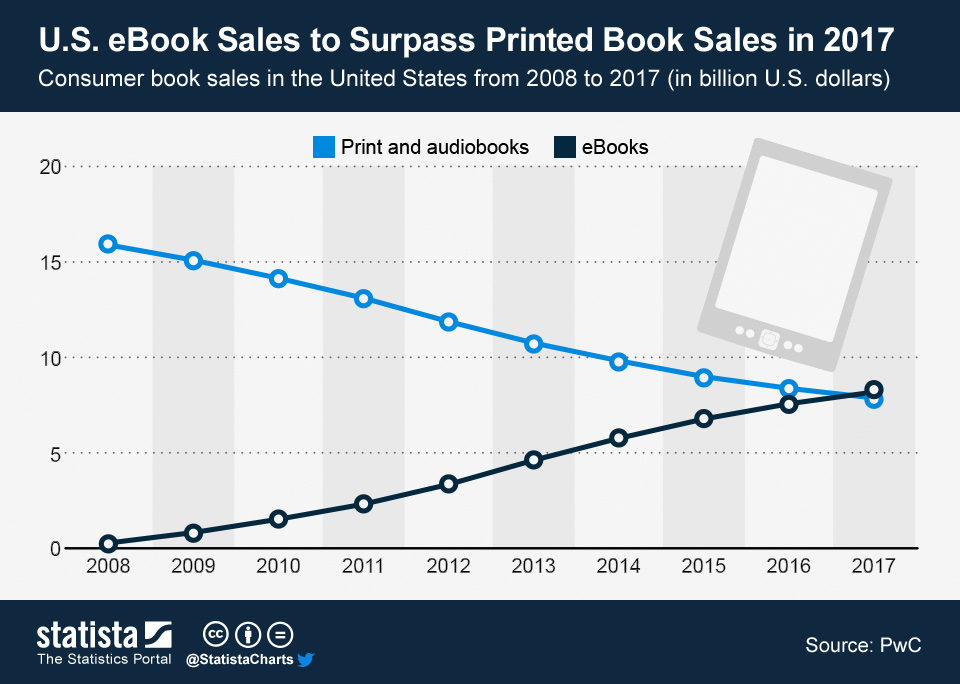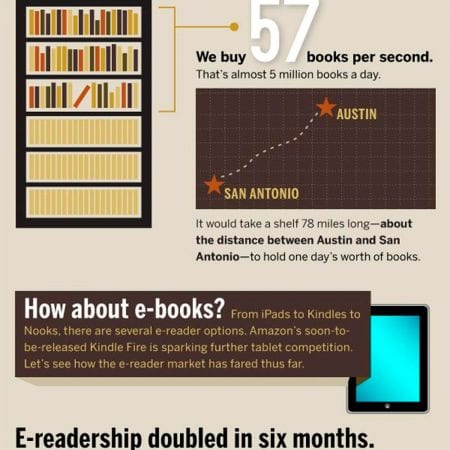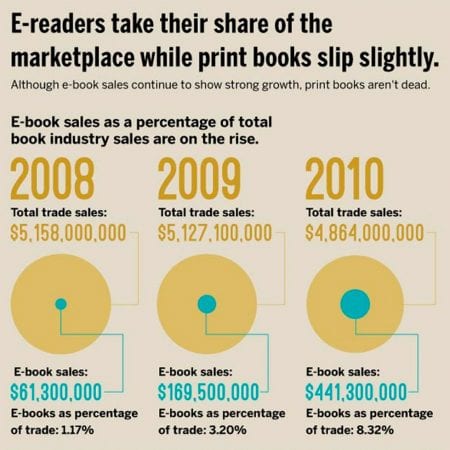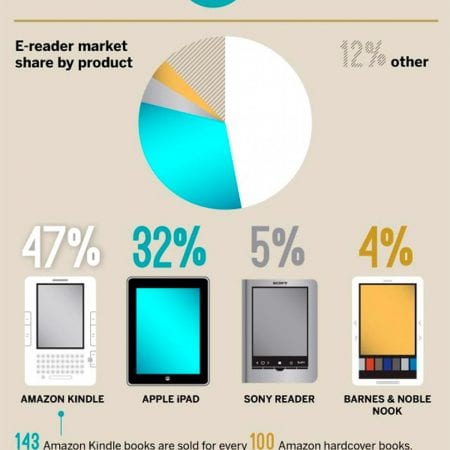Revenue from e-book sales in the United States from 2008 to 2018 (in billion U.S. dollars)
The timeline presents data on e-book sales revenue generated in the United States from 2008 to 2013 as well as a forecast until 2018. PwC expects the revenue will grow from 2.31 billion in 2011 to 8.69 billion in 2018.

An e-book, also known as an electronic book, is a digitally released version of a book, often consisting of text and images and available on electronic devices, such as e-book readers, computers and smartphones. The most well known e-book device is the Amazon Kindle, originally released in 2007.
Revenues from e-book sales in the U.S. have dramatically increased annually, primarily due to a higher supply and demand of e-book devices and applications. In 2008, total e-book sales revenue amounted to 274 million U.S. dollars. However in 2013, revenue was expected to increase by approximately 17 times compared to 2008 and should amount to approximately 4.52 billion U.S. dollars. Based on current trends, it is estimated that revenue from e-book sales in the U.S. will rise to approximately 8.69 billion U.S. dollars in 2017, a value over 30 times as high as the value in 2008.
In terms of unit sales, a mere 10.03 million e-books were sold in 2008, however by 2012, higher demand for e-books escalated this value to 457.09 million units. Despite the rise in e-book popularity, hard copy books were still the preferred choice for readers in 2014. Based on a survey, 46 percent of all respondents claimed to read only hard copy books, while only 6 percent of all respondents read only e-books. A total of 47 percent of all respondents read from both hard copy books and e-books. The most common age for e-book readers in 2014 was between the ages of 18-29, making up 37 percent of all e-book readers. (Source)
Trade e-book sales revenue in the United States from 2008 to 2014 (in million U.S. dollars)
The timeline shows net trade e-book sales revenue in the United States from 2008 to 2014. In 2008, the revenue amounted to 63.9 million US dollars. (Source)

E-book sales as a percentage of total book sales worldwide in 2013 and 2018
This statistic presents e-book sales as a percentage of total book sales worldwide in 2013 and provides a forecast for 2018. In 2013, the digital sales market share amounted to just over 12 percent and is expected to more than double by 2018.
Electronics and mobility influence every step of a consumer’s life; this includes media consumption as well. The book industry is no exception, which is reflected in the e-book usage being on the rise. The forecasted 13-percent growth in sales between 2013 and 2018 is also expected to result in revenue gains. Within the same period, sources predict revenues from e-book sales in the United States alone to increase by more than four billion U.S. dollars, reaching nearly 8.7 billion by the end of 2018.
In the beginning of 2015, daily e-book unit sales on Amazon amounted to approximately 980 thousand. Only 29 percent of them were published by the so called ‘big five’ – Penguin Random House, Macmillan, HarperCollins, Hachette and Simon & Schuster. As the distribution data shows, the largest share – roughly 38 percent – was independently published. However, the bestseller market still seemed to be dominated by the ‘big five’. In fact, Penguin Random House was the leading e-book publisher in the first half of 2014, with 250 bestsellers released in that time. (Source)
U.S. eBook Sales to Surpass Printed Book Sales in 2017
The U.S. eBook market will surpass the printed book market in 2017. That’s according to a projection by PwC (PricewaterhouseCoopers), who published its annual « Entertainment & Media Outlook » this week.
PwC estimates that trade eBooks (excluding educational publications) will reach $8.2 billion in sales by 2017 to surpass printed book sales, which are expected to fall from $11.9 billion in 2012 to $7.9 billion in 2017. Overall book sales are expected to stay below their 2008 level, as eBook sales fail to fully offset the decline in printed book sales.
Does this mean we are reading less? Probably not! Even if book sales remained unchanged in terms of units, the shift to eBooks would lead to a decline in dollar sales, as the average selling price for eBooks is lower than it is for printed books. (Source)















